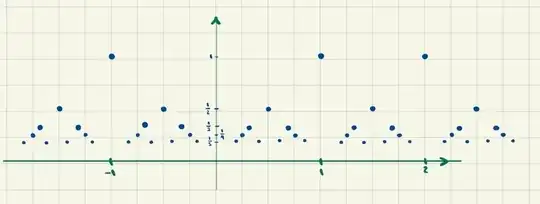This is roughly what the graph of $f$ looks like:

Note that I drew only a few blue points, representing rational values for $x$. In reality, there are infinite such points smaller than the ones I drew. They all have $f(x)>0$.
For any $a \in \mathbb{Q}$, $\nexists \lim\limits_{x \to a} f(x)$ because $f$ is not defined at irrational numbers.
That is, for any $l \in \mathbb{R}$ that we choose as a candidate for being $\lim\limits_{x \to a} f(x)$ there exists $\epsilon>0$ such that for all $\delta>0$, $\exists y$ such that it is not true that $|y-a|<\delta$ and $|f(y)-l|<\epsilon$.
The $y$ in this argument is some irrational number in the interval $|x-a|<\delta$. Since $f(y)$ is not defined, $|f(y)-l|<\epsilon$ is false.
This is the negation of the definition of this limit.
Therefore, $\lnot (\exists \lim\limits_{x \to a} f(x))$, ie $\nexists \lim\limits_{x \to a} f(x)$.
For any new function $F(x)$ such that $F(x)=f(x)$ for rational $x$, no matter how we define $F(x)$ at irrational $x$ there will be at least one (actually it will end up being infinitely many) points with rational $x$ for which $\nexists \lim\limits_{x \to a} f(x)$.
The reason why $F$ being $0$ at irrational numbers is mentioned is that this is the only choice that makes $F$ continuous at the irrational numbers. This is supposedly the "best" case scenario: continuity at irrational numbers but not at (any) rational numbers.
José Carlos Santos answer shows how we can prove continuity at the irrational $x$ with such a definition of $F$ at irrational $x$.
